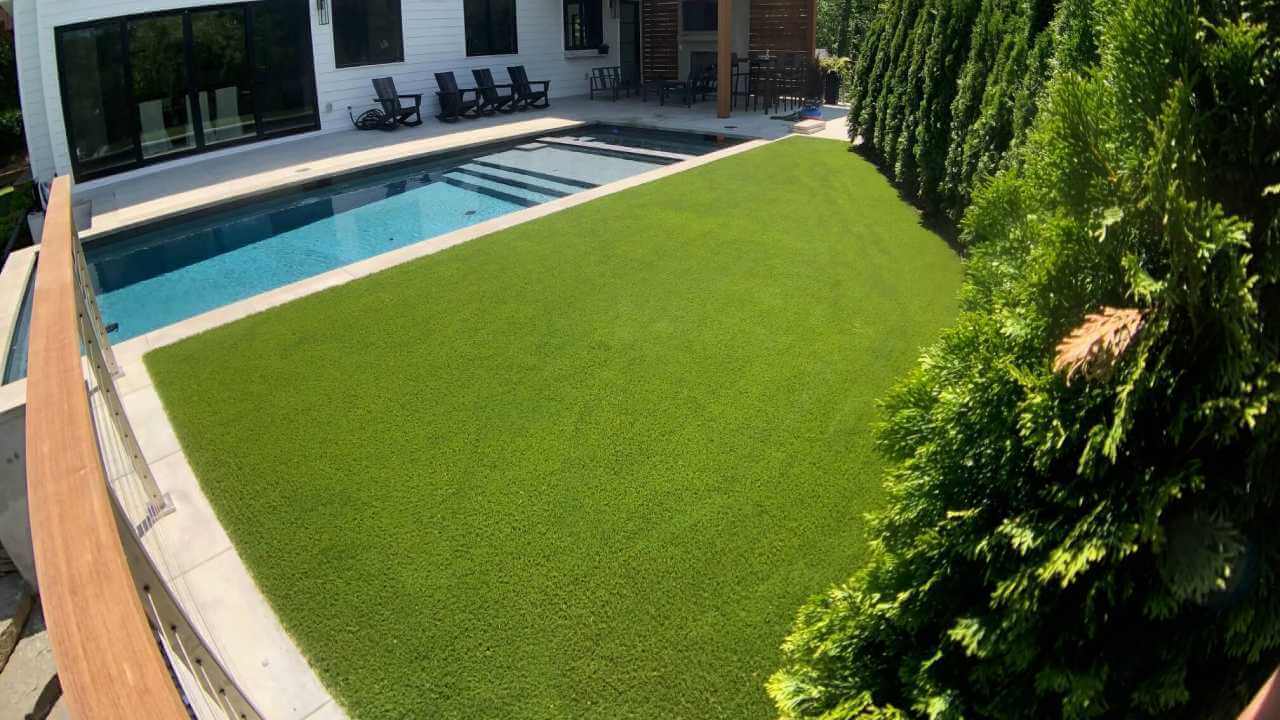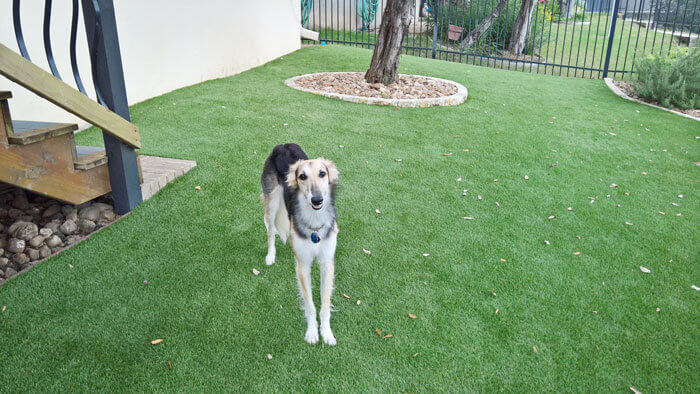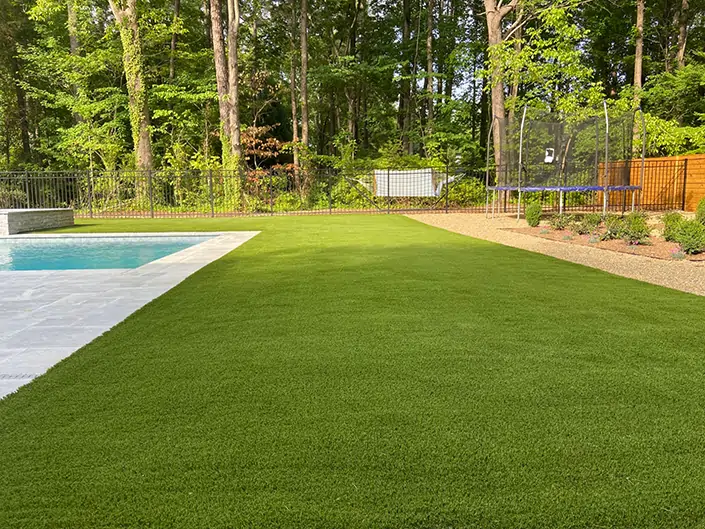Just How Does Synthetic Grass Installation Change Your Landscape?
The setup of artificial grass presents a complex possibility for landscape improvement, providing a mix of visual enhancement and sensible benefits. Past the instant visual allure of a consistently environment-friendly area, synthetic lawn dramatically minimizes maintenance demands and water intake. Its adaptability enables imaginative landscape design services tailored to numerous settings, making it an engaging choice for both industrial and property applications. The ramifications of such a change expand past mere appearances and benefit, triggering more expedition into the long-lasting impacts on expense, environmental sustainability, and total landscape wellness.
Benefits of Synthetic Grass
When considering landscaping solutions, the advantages of man-made grass come to be increasingly apparent. Among one of the most significant benefits is its low upkeep needs. Unlike all-natural lawn, which requires regular mowing, watering, and fertilizing, synthetic grass keeps its lavish look without these labor-intensive tasks. This allows homeowner to allot their time and sources to other pursuits.
Additionally, synthetic grass offers a constant playing surface area, making it perfect for leisure areas and sports areas. Mesa artificial grass. Its longevity makes certain that it can endure hefty foot web traffic without the wear and tear connected with natural lawn, hence promoting year-round functionality
Ecological advantages additionally play an important duty in the allure of synthetic grass. By removing the demand for herbicides and chemicals, it contributes to a healthier ecological community. Additionally, the reduction in water usage is significant, specifically in areas vulnerable to drought.
Furthermore, fabricated turf enhances aesthetic charm, giving a lively eco-friendly landscape that stays uniform throughout the seasons. This consistency can raise residential or commercial property value and visual charm, making it an eye-catching choice for companies and house owners alike. In summary, the various advantages of synthetic grass make it an engaging choice for contemporary landscaping solutions.
Cost Cost Savings Over Time

To start with, fabricated lawn removes the need for persisting expenditures connected to water, plant foods, chemicals, and lawn maintenance services (Turf companies mesa az). House owners can anticipate to conserve considerably on their water costs, specifically in areas vulnerable to dry spell, where watering of natural turf can end up being excessively expensive. In addition, the reduced demand for chemical therapies not just lowers costs yet additionally reduces labor costs connected with grass care
Furthermore, synthetic grass is designed for durability, lasting in between 15 to 25 years with correct upkeep. This durability suggests fewer replacements and fixings, resulting in further cost savings. Over time, the collective economic advantages of synthetic turf can significantly exceed the first expenses, making it a wise financial investment for those aiming to improve their landscapes while also managing their spending plans successfully. In recap, the long-lasting cost financial savings related to artificial see here grass make it an eye-catching choice for property owners looking for both looks and monetary prudence.
Ecological Effect
The environmental effect of synthetic grass is a subject of considerable passion and dispute. Proponents argue that artificial turf conserves water, as it gets rid of the demand for irrigation, which is specifically advantageous in deserts. This water preservation can cause decreased strain on regional water sources and reduced energy expenses for house owners. Furthermore, synthetic grass gets rid of the necessity for chemical fertilizers and pesticides, which can posture dangers to local communities.
However, worries regarding the ecological impact of artificial grass linger. The manufacturing of artificial materials often calls for considerable power and oil sources, adding to carbon discharges. Additionally, when synthetic grass reaches completion of its life process, disposal can end up being troublesome, as numerous items are not naturally degradable and can wind up in landfills.
An additional area of problem is the possibility for microplastics to seep right into the dirt and waterways, which could detrimentally impact aquatic life and ecosystems. While fabricated lawn offers specific environmental advantages, it likewise postures challenges that warrant mindful consideration. Stabilizing the advantages of water conservation with the environmental influences of production and disposal is essential for making notified landscaping decisions.
Style Flexibility
Man-made turf opens a world of design versatility, permitting house owners and landscape designers to produce cosmetically pleasing and functional exterior areas. Unlike conventional grass, synthetic grass can be customized to fit various styles, designs, and functions, enhancing the overall landscape design.
One of the main advantages of synthetic grass is its flexibility. It can be effortlessly integrated into diverse settings, from modern yards to rustic outdoor patios. Homeowners can choose from a selection of textures, shades, and stack heights, making sure that the grass complements existing functions and architectural aspects. This modification extends to special installations, such as curvilinear designs, which can develop attractive vibrant layouts and focal factors.

Upkeep and Long Life
With very little maintenance required, synthetic grass uses a functional service for property owners seeking a low-maintenance landscaping option. Unlike all-natural turf, which requires regular mowing, watering, and fertilizing, synthetic grass significantly minimizes the time and initiative needed to preserve an appealing backyard.
The long life of synthetic turf is an additional compelling benefit. Generally, artificial grass can last in between 15 to 25 years, depending on the high quality of products made use of and the degree of foot traffic it withstands.
Moreover, upkeep tasks for synthetic grass are straightforward. Occasional cleaning to maintain the blades upright, rinsing to remove debris, and periodic infill replenishment are generally sufficient to keep its appearance and functionality. This convenience of maintenance allows home owners to enjoy their exterior rooms without the concern of comprehensive have a peek at these guys labor.
Verdict
In conclusion, artificial turf installment considerably improves landscapes by supplying a lively, low-maintenance alternative to all-natural grass. Generally, fabricated lawn emerges as a lasting my link and sensible option for transforming outside areas into visually attractive and useful settings.

In verdict, man-made turf installation dramatically boosts landscapes by providing a vivid, low-maintenance choice to natural lawn.